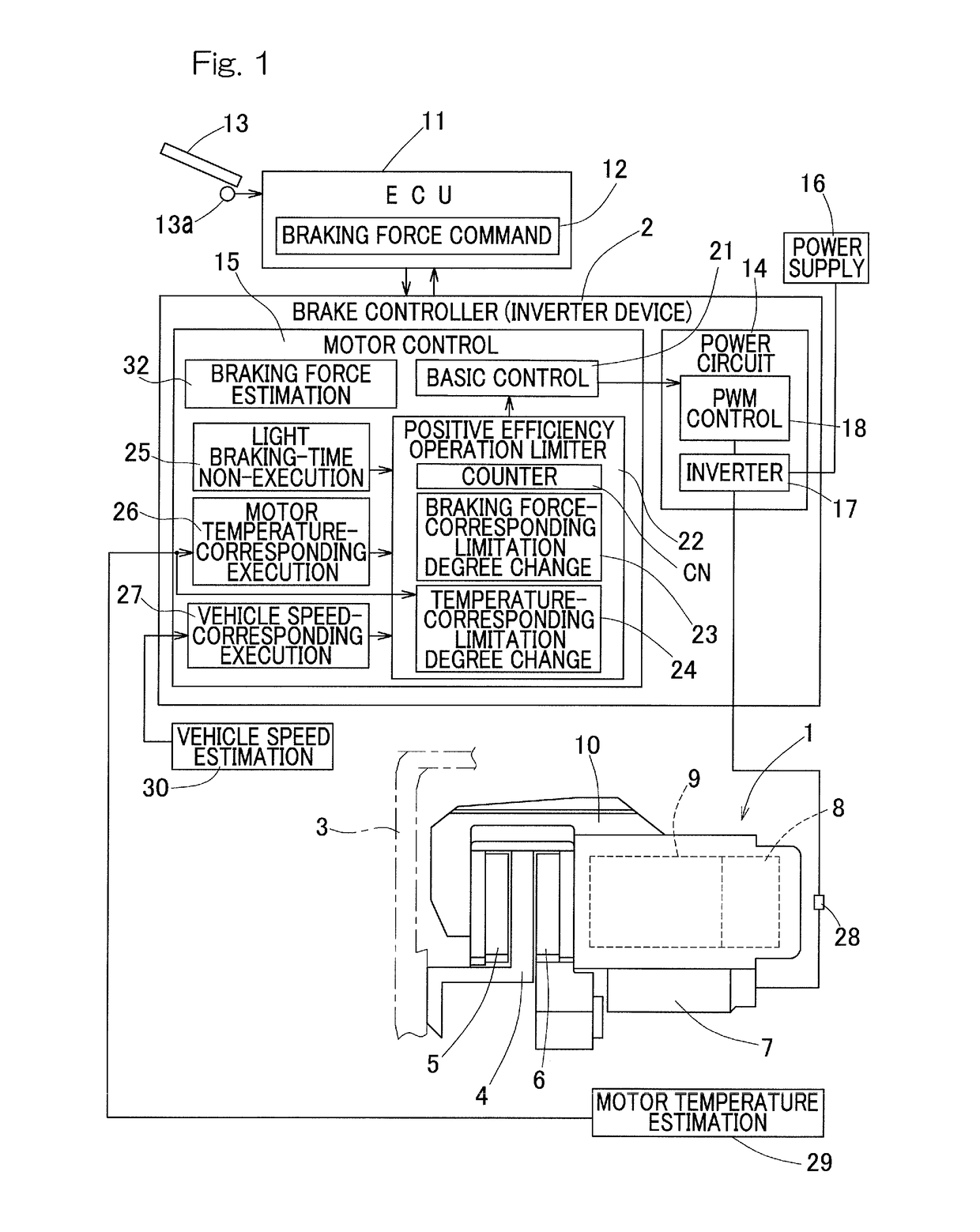Electric brake device
a technology of brake device and brake rod, which is applied in the direction of braking system, mechanical equipment, transportation and packaging, etc., can solve the problems of difficult assumption of power consumption at the design stage, power consumption, and no consideration of reducing motor current, so as to reduce the torque, reduce the motor current, and the generated braking force does not decrease.
- Summary
- Abstract
- Description
- Claims
- Application Information
AI Technical Summary
Benefits of technology
Problems solved by technology
Method used
Image
Examples
Embodiment Construction
[0035]An electric brake device according to an embodiment of the present invention will be described with reference to the drawings. As shown in FIG. 1, the electric brake device includes: a brake main body 1 that is a mechanical part; and a brake controller 2 that controls the brake main body 1.
[0036]The brake main body 1 includes: a brake rotor 4 that rotates in conjunction with a wheel 3; fixed-side and movable-side friction pads 5 and 6 that come into contact with both surfaces of the brake rotor 4, respectively, to generate a braking force; an electric motor 7; a speed reduction mechanism 8 that reduces a speed of rotation (or number of rotation per unit time) of the motor 7; and a conversion mechanism 9 that converts an output of the speed reduction mechanism 8 into a pressing force of the movable-side friction pad 6. The motor 7 is provided with rotation angle detector (not shown) that detects a rotation angle. The brake rotor 4 is mounted on a hub (not shown) so as to be int...
PUM
 Login to View More
Login to View More Abstract
Description
Claims
Application Information
 Login to View More
Login to View More - R&D
- Intellectual Property
- Life Sciences
- Materials
- Tech Scout
- Unparalleled Data Quality
- Higher Quality Content
- 60% Fewer Hallucinations
Browse by: Latest US Patents, China's latest patents, Technical Efficacy Thesaurus, Application Domain, Technology Topic, Popular Technical Reports.
© 2025 PatSnap. All rights reserved.Legal|Privacy policy|Modern Slavery Act Transparency Statement|Sitemap|About US| Contact US: help@patsnap.com



